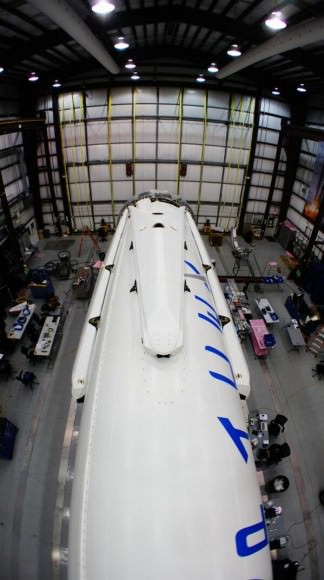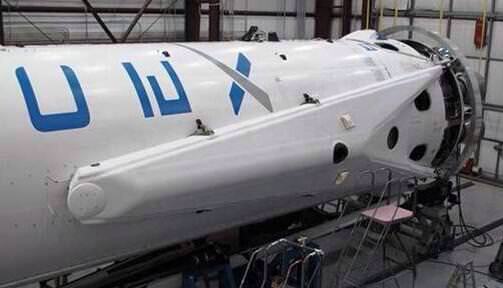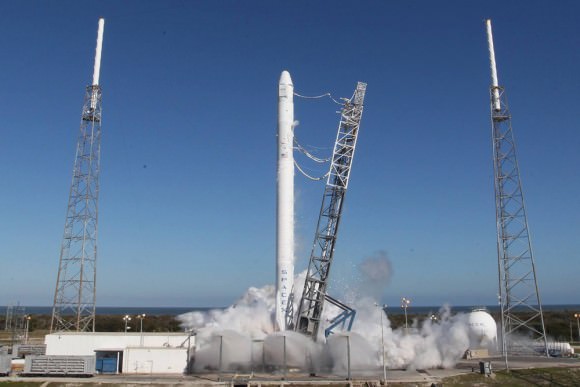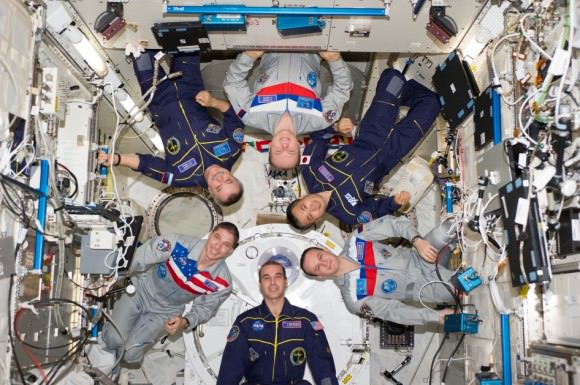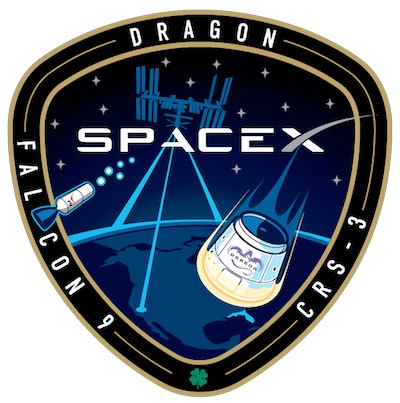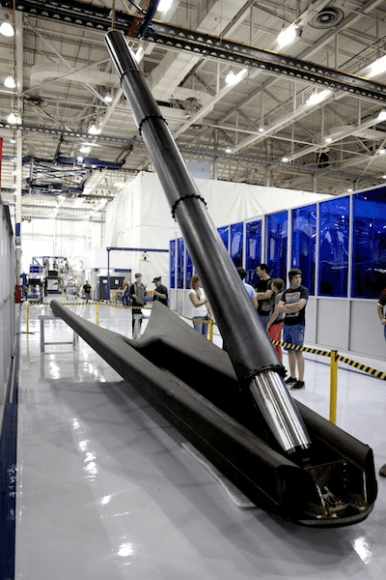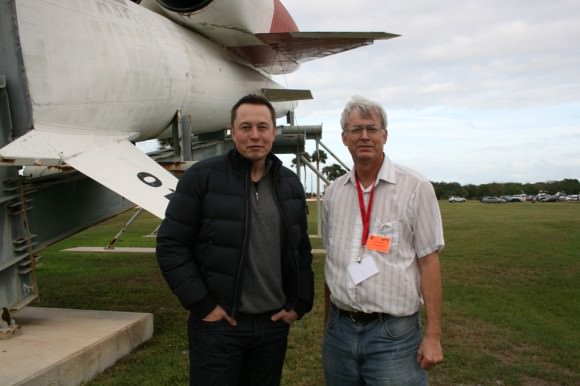KENNEDY SPACE CENTER, FL – Following last week’s sudden and late in the processing flow postponement of the SpaceX Falcon 9 rocket launch, SpaceX announced a reset of its next cargo mission launch for NASA to the International Space Station (ISS) to a new target date of Sunday, March 30.
The commercially developed Falcon 9 booster and Dragon cargo vessel are slated for a spectacular night time liftoff from Cape Canaveral Air Force Station in Florida at 10:50 p.m. EDT on March 30, SpaceX announced on Friday.
This mission, soaring to space under a resupply contract to NASA, could ignite a revolution in both rocketry and robotics.
The first stage of the Falcon 9 rocket sports a quartet of never before tried landing legs and the Dragon freighter is loaded with a set of lanky legs to enable mobility in space for NASA’s Robonaut 2 standing at the cutting edge of space robotics technology.
Launch preparations were suddenly halted less than 72 hours prior to the then planned March 16 early morning launch because of unspecified technical issues concerning the sudden discovery of “contamination,” sources told me.
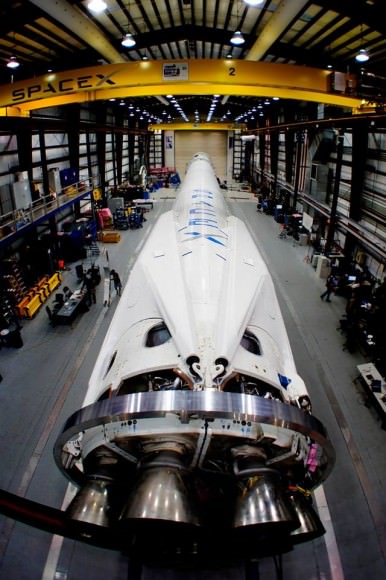
“To ensure the highest possible level of mission assurance and allow additional time to resolve remaining open items, the team is taking additional time to resolve open items and ensure SpaceX does everything possible on the ground to prepare for a successful launch,” according to a statement from SpaceX.
Several sources told me that the problem related to “contamination” that was found in the “unpressurized truck section” at the rear of the Dragon spacecraft.
“An unknown contaminant of unknown origin was found on a blanket in the Dragon trunk,” independent sources said to Universe Today soon after the postponement was announced.
“After careful review and analysis, engineering teams representing both the ISS and SpaceX have determined Dragon is ready to fly ‘as-is.’ All parties agree that the particular constituents observed in Dragon’s trunk are in line with the previously defined environments levels and do not impose additional risk to the payloads,” SpaceX announced in a new statement.
With the contamination issues now resolved, the launch is back on track.
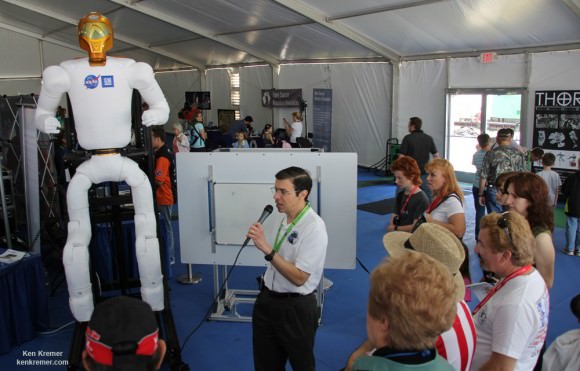
NASA Television will air live coverage on Sunday.
In case the launch is delayed, the backup launch opportunity is at 9:39 p.m. Wednesday, April 2.
Altogether, this unmanned SpaceX CRS-3 mission will deliver over 5000 pounds of science experiments, a pair of legs for Robonaut 2, a high definition imaging camera suite, an optical communications experiment and essential gear, spare parts, crew provisions, food, clothing and supplies to the six person crews living and working aboard the ISS soaring in low Earth orbit under NASA’s Commercial Resupply Services (CRS) contract.
SpaceX is under contract to NASA to deliver 20,000 kg (44,000 pounds) of cargo to the ISS during a dozen Dragon cargo spacecraft flights over the next few years at a cost of about $1.6 Billion.
To date SpaceX has completed two operational cargo resupply missions and a test flight. The last flight dubbed CRS-2 blasted off a year ago on March 1, 2013 atop the initial version of the Falcon 9 rocket.
Following the rescheduled March 30 launch and a series of orbit raising and course corrections over the next two days, Dragon will rendezvous and dock at the Earth facing port on the station’s Harmony module on Wednesday, April 2.
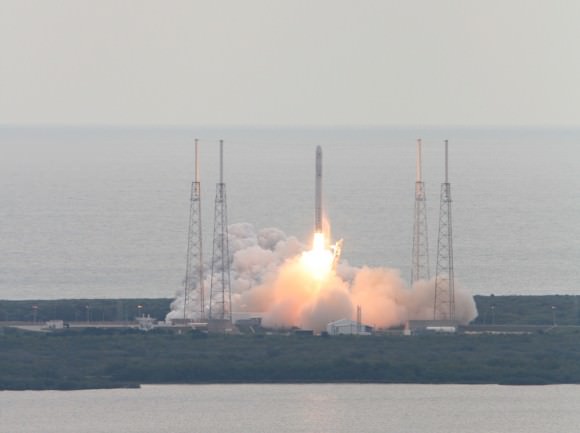
Stay tuned here for Ken’s continuing SpaceX, Orbital Sciences, commercial space, Orion, Chang’e-3, LADEE, Mars rover, MAVEN, MOM and more planetary and human spaceflight news.
Learn more at Ken’s upcoming presentations at the NEAF astro/space convention on April 12/13 and at Washington Crossing State Park, NJ on April 6. Also evenings at the Quality Inn Kennedy Space Center, Titusville, FL, March 24/25 and March 29/30
.
And watch for Ken’s upcoming SpaceX launch coverage at Cape Canaveral & the Kennedy Space Center press site.



